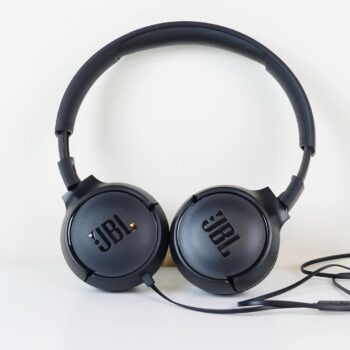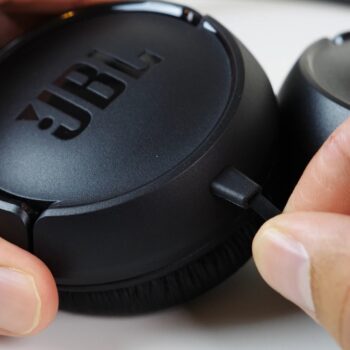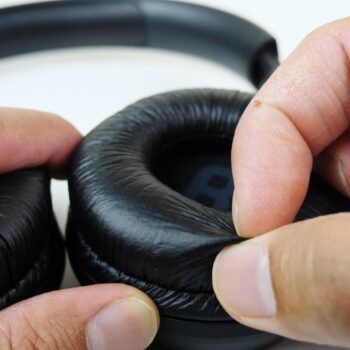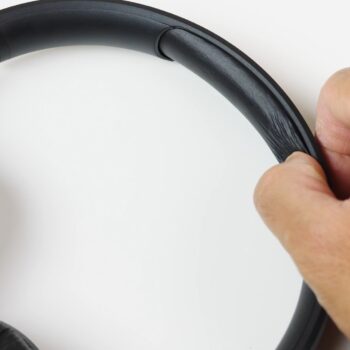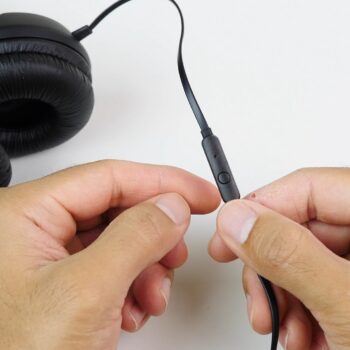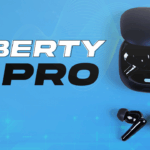Welcome to the review of the JBL Tune 500 wired on-ear headphones. These are exclusively wired headphones, with no wireless mode.
Price
In Canada, they cost $45, while in the US, they’re $30, making them budget-friendly. However, there are trade-offs, which I’ll explain throughout this review.
Connectivity
The headphones are permanently wired, and the cable doesn’t distort or crackle when tugged. The tangle-free cable design works well, and the cable is 46 inches long with a 3.5mm adapter.
Accessories
No accessories are included, just the headphones. However, at this price tag that shouldn’t be surprising.
Design & Comfort
The design is simple, with a large JBL logo that blends in with the rest of the body.
The body folds in, making it more compact for storage in a bag.
Regarding comfort, these headphones aren’t very comfortable. They’re fine for the first 30 minutes, but then they start to feel snug. They don’t get hot or sweaty, but they can become irritating. You can wear them for an hour or two, but it’s not the most comfortable experience due to the tight headband.
With glasses, the irritation starts after 30 minutes, and the ears get warmer, likely due to the glasses frame pushing against the headband. The ear cushions are thick and soft to touch against the hand but firm against the ears. Hands can tolerate more discomfort than ears, which are very sensitive.
The ear cup material feels like it might rip easily, as mentioned in the unboxing video (see YouTube channel video above).
The headphones are more durable than expected and can take some abuse before ripping. However, I’ve seen better material on cheaper wireless headphones, such as my children’s wireless headphones that are $5 (CAD) cheaper than the Tune 500. The JBL Tune 500 sounds better, but comfort is an issue.
The headband has minimal cushioning but it’s enough to get by at this price.
Working out with these headphones isn’t recommended. They’re uncomfortable even at rest, and the cable can get in the way during exercises such as lifting weights. Cable headphones would do fine with certain cardio exercises such as biking, jogging, etc. since the cable isn’t a distraction but the same issue remains regarding the uncomfortable feeling of wearing these headphones.
They come in blue, black, pink, and white, and weigh 148g. Being lightweight it’s evident they’re not very strong. During stretch testing, one headband connection kept coming out, causing minor damage. I was able to easily pop it back in but out of all the numerous headphones I’ve reviewed (even similar budget friendly ones) this is the first time minor damage was easily caused.
The JBL Tune 500 headphones likely lack dust and water resistance, as it’s not mentioned in the documentation. Avoid getting them wet or dirty.
Finding official ear pad replacements for the Tune 500 might be difficult. The JBL UK website lists the Tune 500 earpad replacements as compatible with the 500BT, so third-party 500BT replacements might work, but it’s not guaranteed.
The headband adjusts in notches, not sliders, and the earcups rotate easily in all directions.
The Tune 500 is comfortable to rest on your neck, with small earcups that don’t obstruct movement of my head.
Controls
Controls include a single button on the wire for play/pause and answer/hangup calls with a single tap. Double tap to skip to the next track and tripe tap to go to the previous track. However, the control button doesn’t work with Windows computers for play/pause (in my testing with various computers). It works fine with an old Android device for controlling Spotify, YouTube, and other media apps, likely due to a Windows driver issue.
The button is compatible with iPhone, Siri, and Google Assistant by holding it down for 2 seconds while connected to your smartphone. However, when testing with Google Assistant, it only worked once and then stopped responding, even after multiple attempts.
Lastly, these headphones don’t have the auto-pause/play feature found in more expensive models, where content pauses when you take them off and resumes when you put them back on.
Noise Cancelling
The JBL Tune 500 lacks active noise cancelling (ANC) and transparency mode. It only offers passive noise cancelling, which isn’t very effective. Conversations within 5-10 feet are muffled but still audible.
These headphones aren’t great for noisy environments like planes but might suffice on buses and trains with the audio turned up high.
They also lack sidetone, so you can’t hear your own voice during calls.
Battery
Since there’s no ANC, they don’t require batteries and are fully powered by the auxiliary cable.
Microphone Quality
The inclusion of a microphone on such affordable headphones is great. In a quiet environment, it performed better than expected, providing enough clarity for phone calls.
In noisy environments, some noise comes through when speaking, but it’s toned down to minor rumbling noises. The person on the other end will know you’re out but can still converse with you. When you stop talking, it seems like noise cancelling amplifies, reducing background noise significantly.
However, in a simulated wind test, the microphone performed poorly, allowing wind noise to come through easily. It wouldn’t be ideal for biking on a windy day.
Audio Quality
The audio quality out of the box is better than expected, but the box for the Tune 500 has large writing emphasizing bass boosted sound which is a bit misleading. The bass is slightly enhanced, but not significantly. Bass enthusiasts might be disappointed. The sound profile is flat, with dull mids and highs. The audio sounds clear but doesn’t have much going for it.
Using a third-party equalizer, the bass gets louder but not deeper, causing mids and highs to step back. This is disappointing for headphones advertised as bass-boosting.
Increasing the mids made the vocals sharper, the back instrumentals also became too sharp, so I had to revert to a flat profile. This happened with multiple songs, not just one.
On the other hand, increasing the highs was enjoyable and made the songs more fun to listen to. Oddly enough it didn’t cause the audio to get too sharp like when increasing the mids did.
Overall, the audio performance on a flat profile or with increased mids and lows isn’t great.
With glasses on, the sound quality remains the same since the frames don’t interfere with replacement of the earpads on your ears.
Software
There’s no software available for these headphones, and they’re not compatible with the JBL app. I had to use a third-party equalizer for testing.
Conclusion
Some might find the final verdict harsh, but there are several major problems with these headphones, which will be listed in the cons section below.
The cheaper wireless headphones my children use is more comfortable for a few hours straight, even if the audio quality is slightly worse than the Tune 500. At least you can wear them and enjoy your content.
Score:
6/10
Pros:
-Cable length
-Tangle free cable
-Decent appearance
-Colour options
-Controls
-Some passive noise cancelling
-Available microphone
-Microphone in quiet setting
-Noise cancelling microphone
-Okay audio quality out of box
Cons:
-Not comfortable
-Build strength
-Earpad material
-Replacement earpads hard to find
-Smart assistant performance
-Microphone wind noise blocking
-Bass and mids equaliser performance
-No app

